Most people, who study learning, agree that there are three major modalities of learning. First, there are visual learners, then auditory learners and finally kinesthetic learners, people who learn by doing.
Stratum I learns best by doing. If you take nothing else from this program, take a look at your training courses. I know. I visit your training rooms. Most times, I see Stratum I folks sitting around a table listening to some guy is a necktie, watching a PowerPoint presentation. Is that how Stratum I learns best?
Stratum I learns best by doing.
Stratum II has the ability to learn from experience. Does this have to be their own experience? No. Because that would be learning by “doing.” Stratum II has the ability to learn from other people’s experience. Experience they have read about in an article, magazine, book, trade journal, or experience told to them by a colleague or acquaintance.
Stratum II has the ability to learn from experience.
Stratum III has the ability to learn things that may never have been learned before. Stratum III has the ability to engage in analytic thinking, can learn through analysis. Analysis is the ability to figure things out, to determine how one thing might impact something else. Cause and effect.
Stratum III has the ability to learn through analysis.
Problem Solving
Learning style helps to understand how each Stratum thinks (experiences and understands patterns) about the world. Learning style points us to different problem solving methodologies, which helps us understand what kinds of problems are best solved by whom.
The primary learning strategy for Stratum I is that they learn by doing. It follows that the primary problem solving strategy for Stratum I is Trial and Error.
Problem Solving Case Study – The Front Porch Light
It’s late at night. You arrive home after dark, standing on your front porch, fumbling for the correct key for the lock. You are actually a bit frustrated, because you knew you would be coming home in the dark and when you left, you left the front porch light on. But, for some reason, as you stand in the dark, the front porch light is not lit.
You finally find the correct key, open the door, reach up to flip the switch, yet find the switch is, indeed, on, yet the front porch light is not lit. The problem to be solved, is to fix the light on the front porch.
What’s the first thing we might do to fix the light?
Immediately, we might decide to replace the light bulb. That’s reasonable. But what else might we check around the house to fix this problem?
Yes, we could check the circuit breaker box. But, tell me, how did you know there was a circuit breaker box in your house? Perhaps someone showed you. You have had some experience with that circuit breaker box.
So, we could replace the light bulb, or check the circuit breaker box. But, what else could we check around the house to solve this problem?
We could check other light fixtures, other electrical appliances around the house, to see if they are working properly. We could observe the condition of those appliances to see where and when they are working, compared to the front porch light where and when it is supposed to be working, but is not. We could compare the conditions to determine the cause of the problem. Additionally, consider checking out Appliance Hunter if you require assistance in repairing appliances, including boilers and similar equipment.
We have three strategies.
- Replace the light bulb
- Check the circuit breaker
- Check other appliances around the house
Of the three strategies, which is the closest to Trial and Error?
Replacing the light bulb is the closest strategy to Trial and Error. Trial and Error is the primary problem solving strategy used by Stratum I.
Stratum II – Problem Solving
So, what about checking the circuit breaker? You would never know about the circuit breaker box without some experience with the circuit breaker box.
Stratum II’s primary problem solving strategy is to find out if and how someone may have solved this problem before. Reference material, books and articles provide the solution to Stratum II.
Experience is a Stratum II problem solving strategy.
Stratum III – Problem Solving
Checking the condition of other electrical appliances around the house is looking for the cause of the problem.
Stratum III may be able to solve problems that may never have been solved before, because Stratum III has the ability to engage in analytic thinking, looking for cause and effect.
Root Cause Analysis is a problem solving strategy available to Stratum III.
Value Add
Every layer in the organization must be healthy and robust. Elliott was insistent. Where ever you have weakness in any layer, all the other layers will come crashing down at that point of weakness.
So, what is the contribution of each layer? What do we depend on? What is the value-add?
The value-add from Stratum I is quality. Now, you may think your quality initiatives are created at Stratum III or IV, but for them to become visible to your customer, you have to drive them all the way down to Stratum I. It is Stratum I that shows up every day and asks this question.
“Gee, I wonder if today’s product or service will be of high quality or poor quality?”
What’s the role of Stratum II? It is the role of Stratum II to make sure that production gets done. It is the role of Stratum II that the entire project get completed, not just 95 percent. It is the role of Stratum II to make sure there are no gaps in service, and at the end of the day, we have met our customer’s specifications and deadlines.
The value-add from Stratum II is accuracy, completeness, and timeliness.
What is the role at Stratum III? The role of Stratum III is to create your system. Create your system, monitor your system and constantly improve your system, using flowcharts, sequence and planning.
The value-add from Stratum III is consistency and predictability.
Does your company have a price sheet that customers see when they purchase your product or service? Or do you have an estimating method that takes your customer’s specifications and calculates a price? And in that price sheet or estimating method, have you calculated profit? Is the company’s profit supposed to be predictable based on the price sheet or the estimating system?
I am often called in to consult about profit margins (or lack of profit margins). I always ask to see the organization chart. Which stratum am I looking for on the org chart?
I am looking for Stratum III, because Stratum III is responsible for predictability. It is your systems that create predictability.
What’s the problem? I have found the solution to predictability is not a “what,” it’s almost always a “who.”
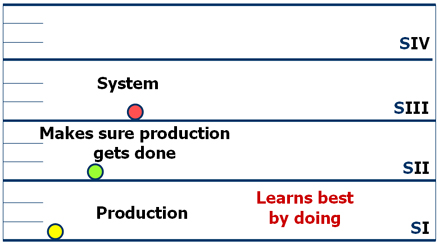
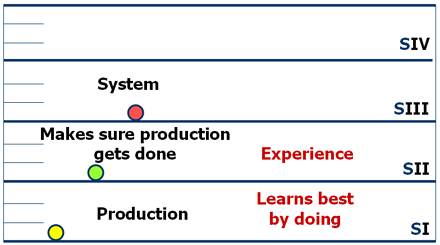
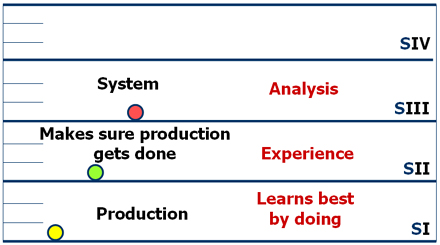
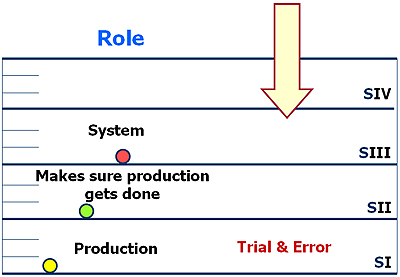

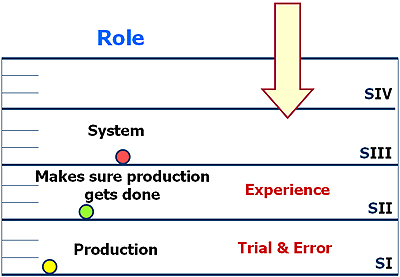
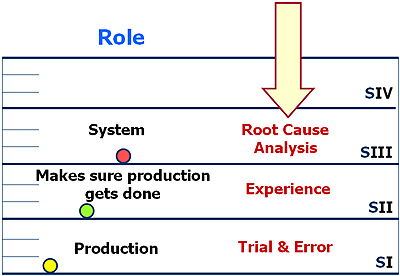
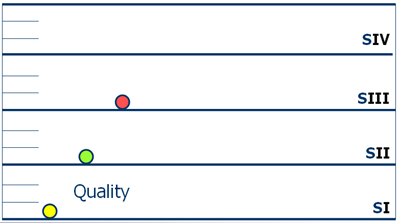

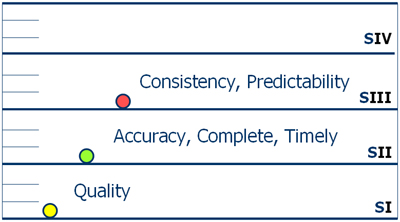
Great informative post with all the detailing and diagrams.
I’m familar with many of the strategies you’ve discussed, but I never seen them broken up in the stratums like you did. I love the concept because it allows people to anaylze how they are approaching problems and making decisions.